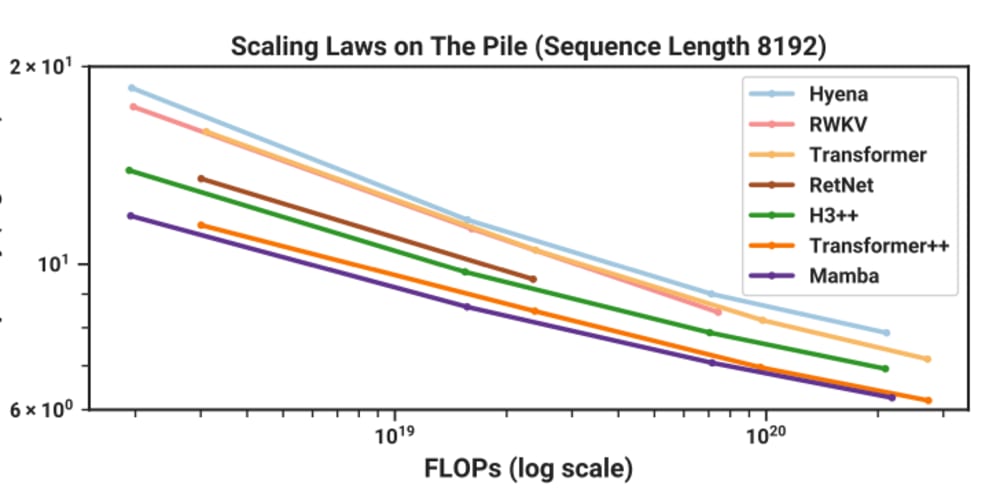In the modern data-driven world, businesses rely heavily on systems that manage, store, and analyze vast amounts of data. Two such systems, Online Transaction Processing (OLTP) and Online Analytical Processing (OLAP), play critical roles in different areas of data management. Though they share some similarities, these systems serve distinct purposes. OLTP is optimized for handling transactional data quickly and efficiently, while OLAP excels at analyzing large data sets for decision-making.
In this article, we will explore the key differences between OLTP and OLAP, the role each plays in the business landscape, and why understanding both is vital for organizations striving to maximize the value of their data.
Table of Contents
- What is OLTP?
- What is OLAP?
- Core Differences Between OLTP and OLAP
- Performance Characteristics
- Data Models in OLTP vs. OLAP
- Use Cases of OLTP Systems
- Use Cases of OLAP Systems
- When to Use OLTP and OLAP
- Benefits of Using OLTP
- Benefits of Using OLAP
- Challenges of OLTP and OLAP
- The Future of OLTP and OLAP
- Conclusion
- Excerpt (35 words)
1. What is OLTP?
Online Transaction Processing (OLTP) refers to systems designed to manage and support transactional processes in real time. These systems handle a high volume of small transactions, such as sales orders, ATM transactions, or customer inquiries, ensuring the consistency, accuracy, and durability of data.
The primary goal of an OLTP system is to ensure the fast, accurate processing of transactions while maintaining data integrity. Businesses use OLTP systems in everyday operations, such as processing online bookings, bank transactions, and inventory tracking.
Key Characteristics of OLTP:
- High transactional throughput
- Real-time data processing
- Ensures ACID (Atomicity, Consistency, Isolation, Durability) compliance
- Optimized for frequent read and write operations
- Typically involves simple queries on a small amount of data
- Data is normalized to avoid redundancy and ensure consistency
2. What is OLAP?
Online Analytical Processing (OLAP) is designed to support complex analysis and queries on large data sets. It is primarily used for data mining, trend analysis, and reporting, enabling businesses to make informed, strategic decisions. Unlike OLTP systems, OLAP does not handle individual transactions but rather focuses on multi-dimensional data models to extract insights.
OLAP systems are typically used by decision-makers to perform in-depth analysis over extended periods. Examples include analyzing quarterly sales trends, understanding customer behavior, or identifying potential business risks. The data stored in OLAP systems is usually historical and aggregated from various sources, making it easier to perform complex calculations.
Key Characteristics of OLAP:
- Handles large volumes of data for analysis
- Optimized for complex queries
- Data is often denormalized and aggregated
- Provides a multi-dimensional view of data (e.g., time, product, region)
- Batch processing is common, as real-time response is not always necessary
- Uses techniques like slicing, dicing, drilling down, and rolling up data
3. Core Differences Between OLTP and OLAP
Understanding the core differences between OLTP and OLAP is essential for businesses looking to leverage these systems effectively. Each serves a unique purpose, and organizations often need both to cover different aspects of their data management strategy.
| Feature | OLTP | OLAP |
|---|---|---|
| Purpose | Transaction processing | Data analysis and reporting |
| Data Volume | Low to medium | High (historical and aggregated) |
| Transaction Type | Short, simple, frequent | Complex, infrequent queries |
| Speed | Fast (real-time) | Slower (batch processing) |
| Data Model | Highly normalized | Denormalized and multidimensional |
| Users | Clerical staff, end-users | Analysts, managers |
| Example Queries | Insert, update, delete | Aggregation, sum, average |
4. Performance Characteristics
OLTP Performance:
OLTP systems prioritize speed and efficiency in handling transactions. They are optimized for scenarios where multiple users are interacting with the system concurrently, such as shopping cart management or banking transactions. Performance is a critical factor in OLTP systems, and as such, databases are fine-tuned for low-latency read and write operations.
OLAP Performance:
On the other hand, OLAP systems prioritize the ability to handle complex queries that often require aggregating and filtering vast amounts of historical data. While OLTP systems prioritize speed for individual transactions, OLAP systems focus on optimizing large, complex queries.
5. Data Models in OLTP vs. OLAP
OLTP Data Model:
OLTP databases use a normalized data model. In normalization, data is broken down into smaller, related tables to eliminate redundancy and improve data consistency. Normalization is essential in OLTP systems to reduce the time taken to update records across large databases.
For example, in a retail system, separate tables might store customer information, product data, and transaction details. By normalizing the data, updates to a customer’s address only need to happen in one place, reducing redundancy.
OLAP Data Model:
In contrast, OLAP databases are often denormalized to optimize for complex query performance. This denormalization allows for faster querying across large datasets by reducing the need for joins across multiple tables. OLAP systems typically store data in a multi-dimensional format, often represented by star or snowflake schemas.
The star schema, for instance, is designed around a central fact table (e.g., sales transactions) linked to dimension tables (e.g., time, product, and geography).
6. Use Cases of OLTP Systems
OLTP systems are suited for operations that require high transaction throughput and real-time processing. Some typical use cases include:
- E-commerce transactions: Managing shopping cart updates, order placements, and payment processing.
- Banking operations: Processing customer deposits, withdrawals, transfers, and balance inquiries.
- Customer service systems: Recording support requests, updating customer profiles, and managing interactions.
- Inventory management: Tracking real-time stock levels across various warehouses.
- Reservation systems: Booking flights, hotel rooms, or appointments.
7. Use Cases of OLAP Systems
OLAP systems shine when it comes to analyzing large sets of historical data. Some common use cases include:
- Business reporting: Analyzing financial performance, sales trends, and budget tracking across regions and time.
- Market research: Extracting customer insights, product performance, and consumer behavior trends from historical data.
- Supply chain management: Identifying inefficiencies in logistics, tracking supplier performance, and forecasting demand.
- Sales forecasting: Analyzing past sales data to make informed predictions about future performance.
- Risk management: Detecting anomalies, assessing risks, and identifying potential fraud.
8. When to Use OLTP and OLAP
In practice, most organizations will need both OLTP and OLAP systems to meet different business needs. OLTP systems are essential for daily operations, while OLAP systems help businesses understand trends, make strategic decisions, and plan for the future.
OLTP is ideal when:
- You need to handle real-time, transactional data.
- Speed and data integrity are critical.
- Frequent, small-scale updates are necessary.
OLAP is ideal when:
- You need to analyze historical data.
- The focus is on complex queries and data mining.
- You require detailed, multidimensional reports.
9. Benefits of Using OLTP
OLTP systems offer several benefits to businesses:
- Efficiency: Processes high volumes of transactions quickly and reliably.
- Data accuracy: Ensures consistency and integrity, thanks to ACID compliance.
- Real-time processing: Supports live operations like sales, banking, and customer service.
- Scalability: Can handle increasing numbers of transactions as a business grows.
- Cost-effectiveness: Typically optimized for low-latency operations, minimizing hardware requirements.
10. Benefits of Using OLAP
OLAP systems bring their own set of advantages:
- In-depth analysis: Supports complex queries and data mining, enabling informed decision-making.
- Multidimensional views: Allows users to analyze data from various perspectives, such as by time, location, or product category.
- Enhanced reporting: Produces detailed reports that summarize large volumes of data.
- Predictive capabilities: Helps businesses forecast future trends based on historical data.
- Data aggregation: Simplifies the analysis of vast datasets by providing aggregated insights.
11. Challenges of OLTP and OLAP
Challenges in OLTP:
- Scalability issues: As transaction volumes grow, OLTP systems may face performance bottlenecks.
- Maintenance costs: Normalized databases require regular maintenance to ensure data consistency.
- Limited analytical capabilities: OLTP systems are not designed for complex queries, making them unsuitable for detailed analysis.
Challenges in OLAP:
- Complexity: OLAP systems require significant setup and maintenance, especially when dealing with multi-dimensional data.
- Slower real-time performance: OLAP systems are not built for real-time transaction processing and can be slower than OLTP systems in this regard.
- Cost: Due to the large volume of data they handle, OLAP systems can be expensive to implement and maintain.
12. The Future of OLTP and OLAP
As businesses continue to digitize their operations, both
OLTP and OLAP systems will play a crucial role in managing and analyzing data. Emerging technologies like Big Data, Artificial Intelligence (AI), and Machine Learning (ML) are driving advancements in both OLTP and OLAP systems, allowing for real-time analytics, better decision-making, and predictive modeling.
Hybrid systems that combine the strengths of OLTP and OLAP, such as Hybrid Transactional/Analytical Processing (HTAP), are becoming more prevalent, enabling businesses to process transactions and perform analytics simultaneously.
13. Conclusion
Understanding the differences between OLTP and OLAP systems is crucial for businesses looking to optimize their data management strategies. OLTP systems provide the backbone for day-to-day operations by processing transactions quickly and maintaining data integrity. On the other hand, OLAP systems enable organizations to extract valuable insights from large data sets, driving strategic decisions.
Both OLTP and OLAP systems are indispensable in modern businesses, serving complementary roles. By leveraging the strengths of each, organizations can ensure that they handle transactions efficiently while also gaining the insights they need to stay competitive in their industry.



















